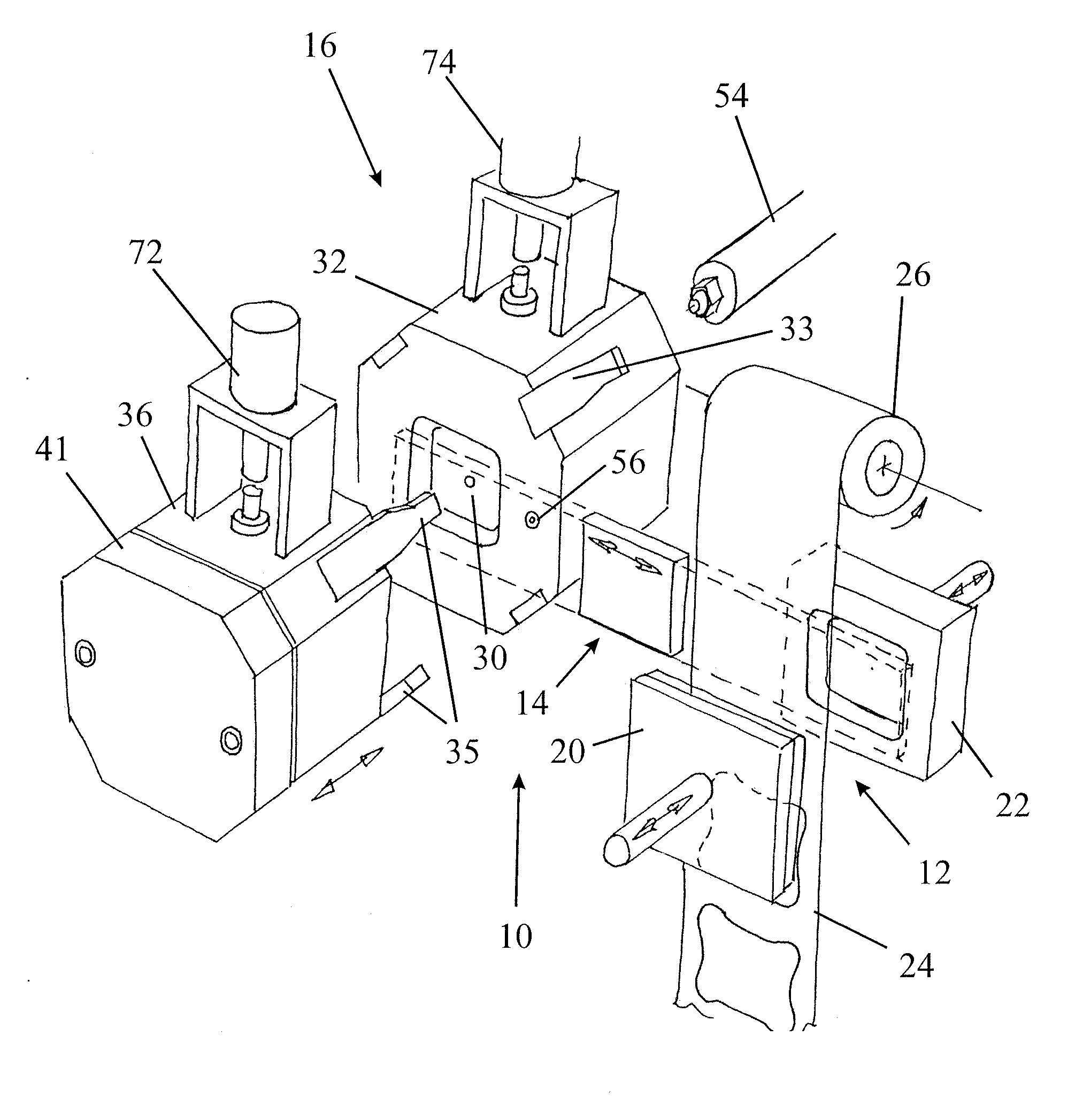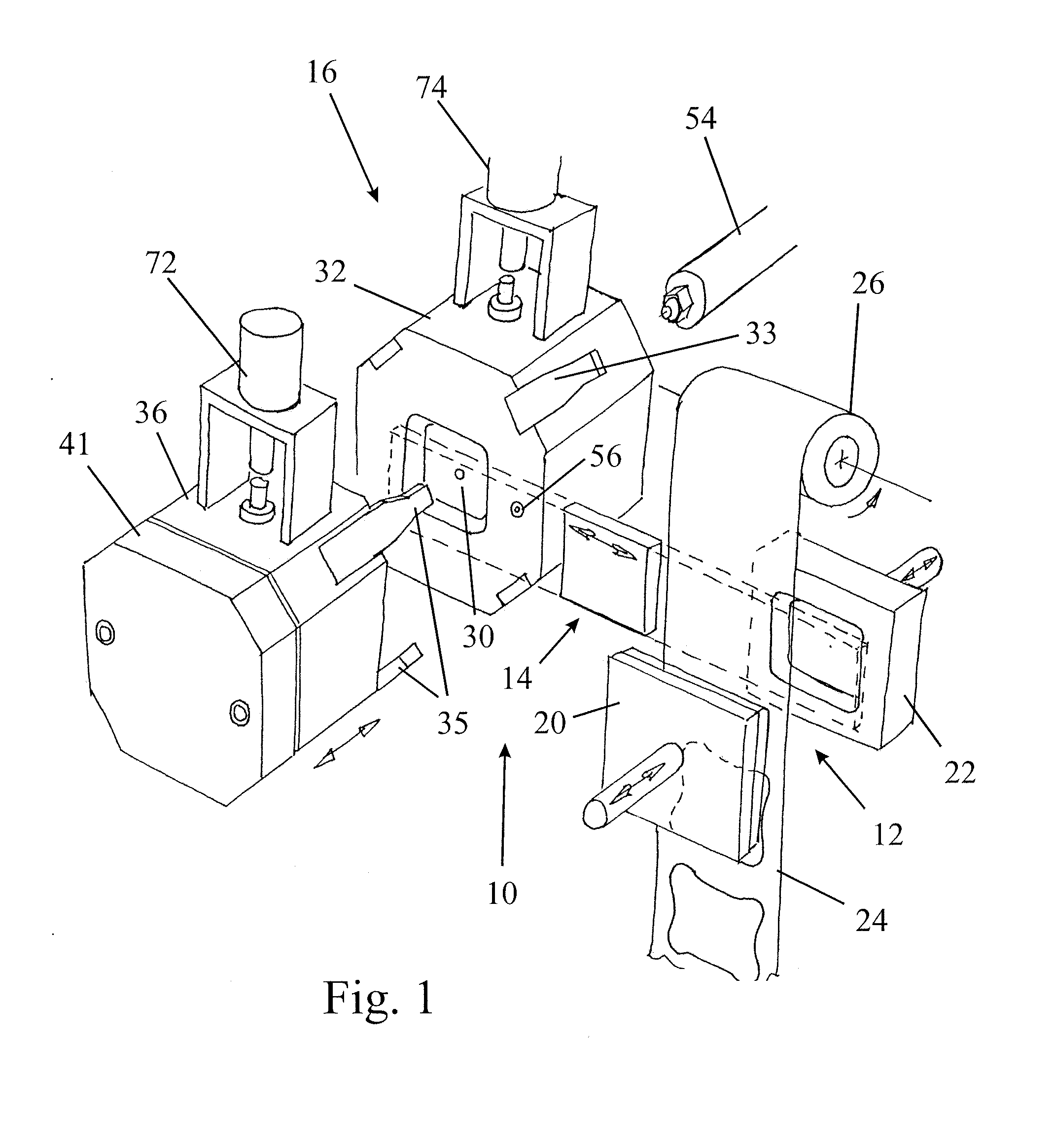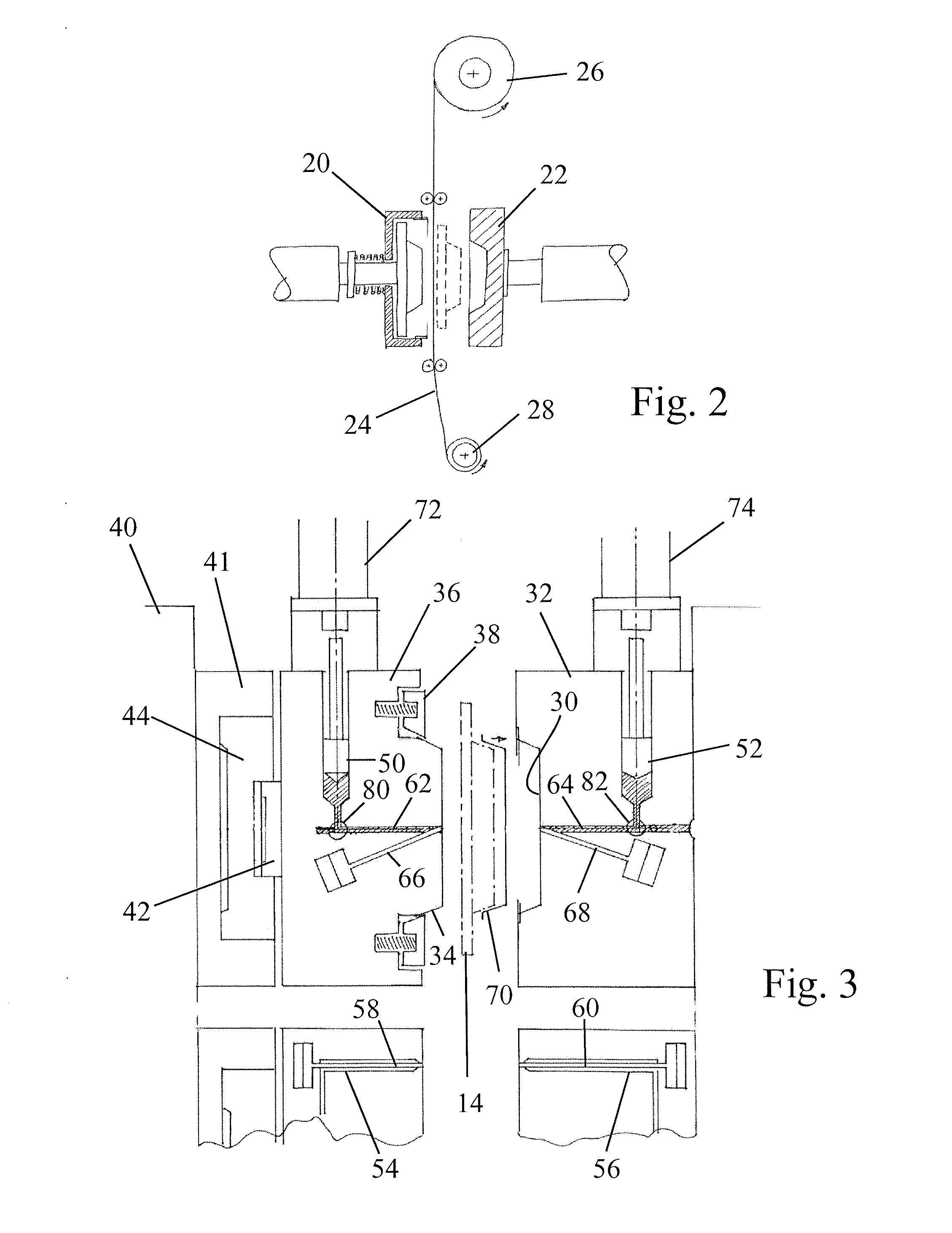Injection Compression Moulding Apparatus
a technology of injection compression and moulding apparatus, which is applied in the field of injection compression moulding apparatus of plastics material, can solve the problems of large gap between the two parts of the mould, difficult formation of thin articles, and inability to form thin objects,
- Summary
- Abstract
- Description
- Claims
- Application Information
AI Technical Summary
Benefits of technology
Problems solved by technology
Method used
Image
Examples
Embodiment Construction
[0018]FIG. 1 shows schematically an apparatus 10 for forming a square container of the type commonly used, for example, in packaging margarine. Currently, such containers are often formed by thermoforming. In this process, a flat sheet is stretched by means of an applied vacuum and optional mechanical assistance to conform to a female mould. The process has disadvantages in that the base of the formed container is thicker than it needs to be, while the sides and the corner are weakened unnecessarily. In other words, the best use is not made of the plastics material. Furthermore, the plastics material does not contain an oxygen barrier and this reduces the shelf life of the packaged comestible product.
[0019]Conventional injection moulding can alternatively be used to form such an article but the length to thickness ratios are such that expensive material have to be used. Even when using low viscosity plastics materials, one is obliged to make the sides of the container thicker than n...
PUM
| Property | Measurement | Unit |
|---|---|---|
| thickness | aaaaa | aaaaa |
| speed | aaaaa | aaaaa |
| speeds | aaaaa | aaaaa |
Abstract
Description
Claims
Application Information
 Login to View More
Login to View More - R&D
- Intellectual Property
- Life Sciences
- Materials
- Tech Scout
- Unparalleled Data Quality
- Higher Quality Content
- 60% Fewer Hallucinations
Browse by: Latest US Patents, China's latest patents, Technical Efficacy Thesaurus, Application Domain, Technology Topic, Popular Technical Reports.
© 2025 PatSnap. All rights reserved.Legal|Privacy policy|Modern Slavery Act Transparency Statement|Sitemap|About US| Contact US: help@patsnap.com



